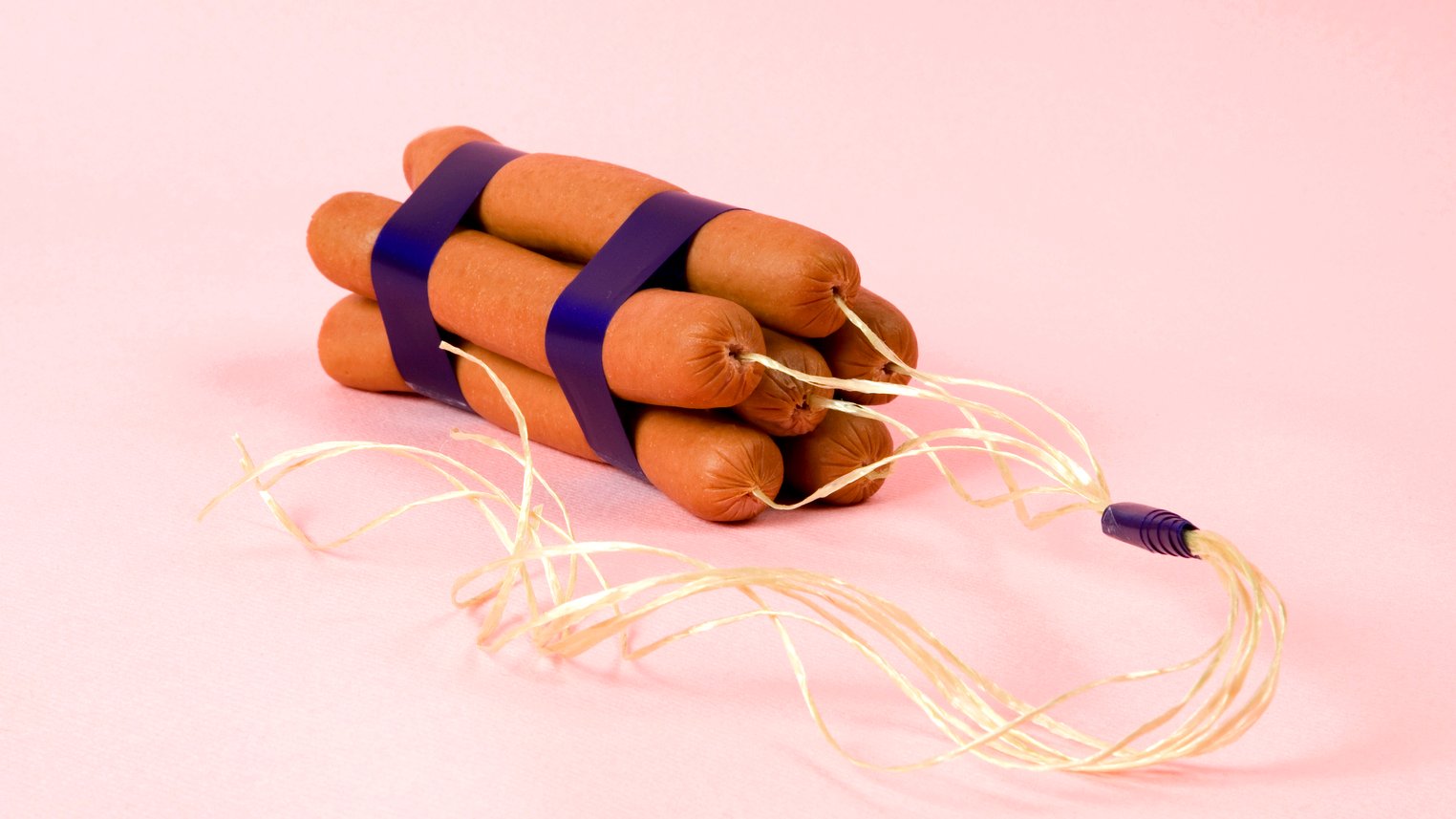Why Do Sausages Scream And Explode In The Microwave?
There's a video making the rounds on the internet that will haunt your dreams. On mute, it looks like a typical clip of breakfast sausages frying away. Turn the volume up, and ear-piercing screams of tortured pig souls call out from the great beyond. My breakfast links never seem to cook up quite so horrifically, but those looking to recreate the unsettling soundtrack at home have found that the trick is to skip the pan all together and cook their sausage in the microwave. In less than a minute, those little devils will be howling like the damned.
Personally, I prefer the quiet sizzle of a hot griddle, but all these meat torture videos got me thinking about the science of sausage more generally. What happens when you cook a sausage? Why do some scream and others split? And is there hope for those of us who want to cook in quietude?
First, what is a sausage anyway? The simple answer is it's just meat stuffed into a tube, but there are two important ingredients which separate the humble link from other ground creations: salt and time. When left to mingle for a few hours, salt will draw out the natural moisture in the meat, breaking up muscle fibers and dissolving some of the proteins. As J. Kenji Lopez-Alt explains, this makes the meat "stickier" and helps the sausage bind to itself. Even more importantly, this process creates a tighter protein structure that will then reabsorb the moisture, helping the sausage stay juicy as it cooks. Think about the difference between a sausage link (smooth-textured and sturdy) and a hamburger (loosely-packed and coarse). The former will stay moist and delicious, while the latter can quickly dry out if overdone.
This perfect encased meat delivery package, though, still has to survive the cooking process, and different components can work against each other when heated. The casing, for example, tends to shrink as it gets hot, whereas the meat will plump up and expand as the moisture inside turns to steam. If everything doesn't cook in sync, the result will be a sad sausage.
You might be most familiar with this unfortunate fate when cooking hot dogs or brats on the grill. Throw them into the hot flames and the outside cooks too quickly; the skin shrivels fast around the still cold meat and splits open long before the center is cooked through. Stick them on the cool side, though, and you've got the opposite problem; the meat plumps up to fill the casing, but the steam quickly escapes and the sausage shrivels.

To see this in the extreme, let's return to those screaming breakfast links cooking in the microwave mentioned above. Once the oven turns on, the electromagnetic waves begin vibrating any water molecules in the food to warm them up. For these sausages, that means the heating is happening inside-out—the meaty center is juicy and cooking fast, while the dry casing outside stays cool and intact. Moisture inside turns so quickly to steam that it rips out through the skin, whistling away like a mini-pork tea kettle. Keep the power on, and this violent process will continue until the skin tears completely and expanding meat guts explode out. The ruptured mess that's left is edible, sure, but it's hardly a pretty sight.
Those shrieking links aren't the only sausages to give auditory pleasures. The O.G. loud sausage is the British "banger." This staple of the English breakfast purportedly dates back to the first World War when rationing forced Brits to make do with less meat. Prime rib was off the menu, of course, but even the cheaper cuts typically scraped together for sausages were in short supply and butchers and home cooks looked for ways to stretch their meager resources.
The solution they settled on was rusk, a twice-baked biscuit that could be crumbled to form a super-absorbent breadcrumb. Adding a percentage of rusk and water to the pork helped stretch the meat further, but it meant that the sausages ended up with a lot more moisture locked inside that the typical link. When dropped into a hot pan, all that extra water had nowhere to go, and cooks stood back waiting for the eventual terrifying "bang" as the skin exploded open.
If you're skeptical that meat can be this noisy, consider the work of Stuart Farrimond. With the help of a well-read butcher, this food scientist cooked up historically-accurate sausages from the British canon and measured their volume. He found that sausages today are half as loud as those cooked in 1945 (when salt-content was highest and filer made up as much as 50 percent of the volume), but that even louder sausages could be found going back a century earlier. Topping the sound meter was the so-called "Kentish sausage" circa 1845, whose sizzle came not from escaping steam, but from pockets of wet fat. Made with coarsely-chopped pork and a high proportion of fat (about 40 percent), the sausages had a tendency to surprise the cook. "As pieces of fat melted," Farrimond said, "a sudden gush of moisture would strike the pan, causing very loud, geyser-like spraying fizzles."
So for those like me who want to keep their sausages in one piece and cook sotto voce, is there any hope? The safest method is to poach them first in a bath of 150 degrees Fahrenheit water and finish in a hot pan. The slow cook ensures the links are heated through without turning the moisture inside to steam, and the quick high heat coda provides a browned, tasty outside. There are no screams, no splits, and no terrifying bangs, but squeals of delight from the cook are encouraged.
